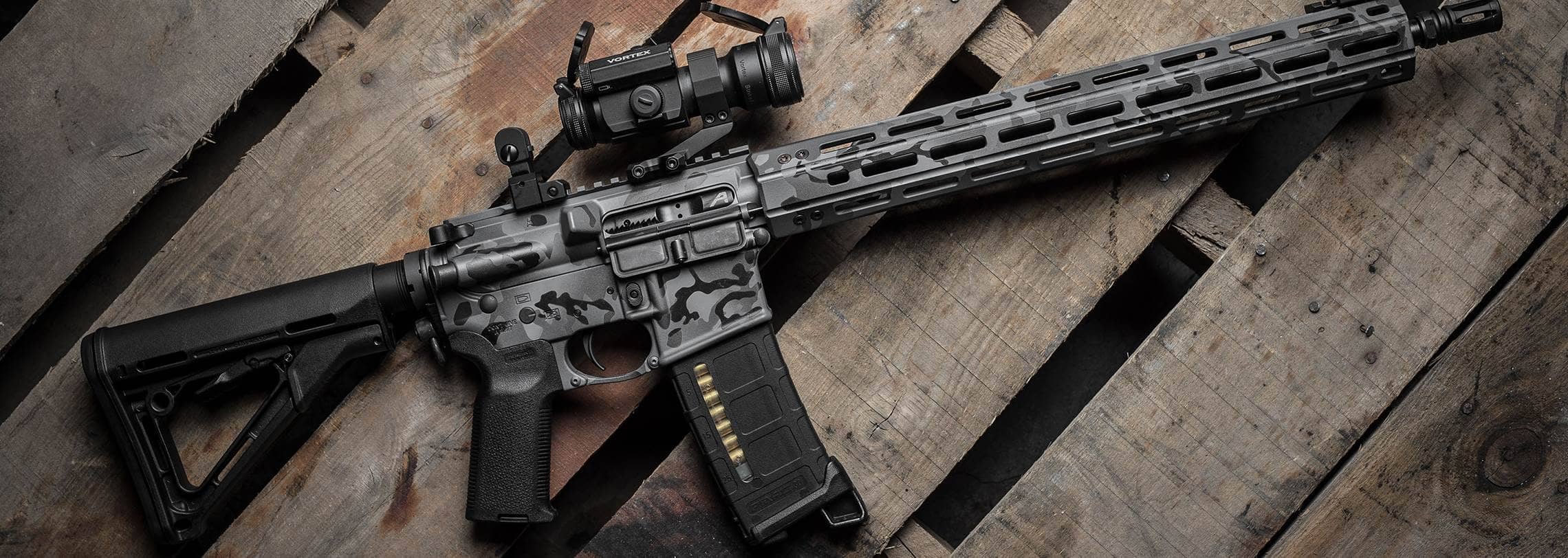
Parts of an AR-15
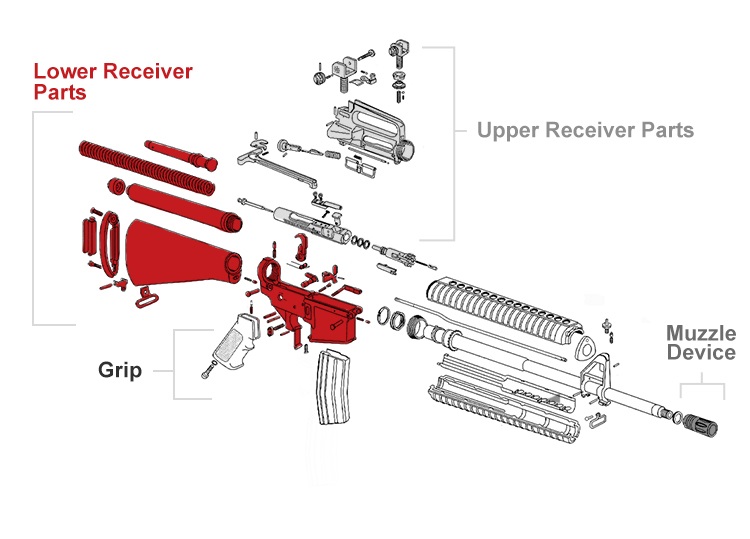
You’re here because you’re a gun enthusiast. And you’ve come to the right place because we are, too.
The AR-15 is the most customizable weapon platform on the market. You can either buy a complete stock rifle or custom build your own from the ground up. Building an AR-15 may sound quite intimidating, but it is actually relatively simple! Whether you want to build an AR-15, or upgrade your stock configuration, it is important to have a thorough knowledge of its parts. You also need to know what kinds of accessories are out there. This will allow you to customize your weapon to the configuration that you want.
So how well do you know your rifle? Let’s take a look at the parts that make up your formidable AR-15.
Upper Receiver Group Parts
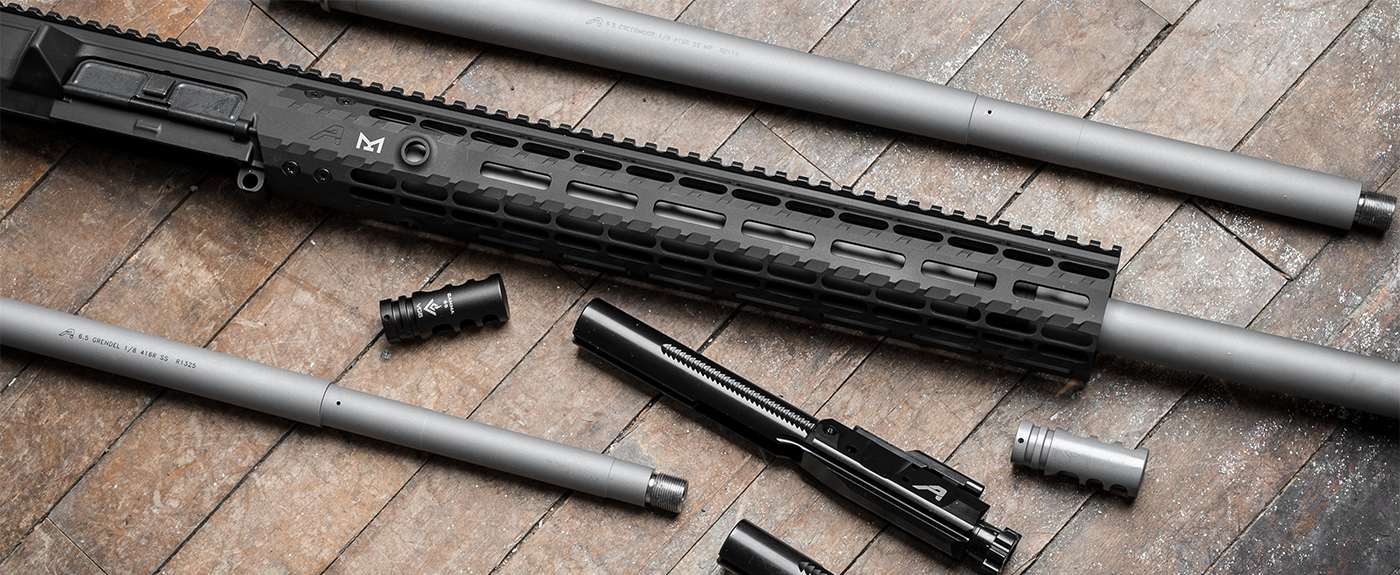
Your rifle’s upper receiver group is the part that consists of the upper receiver, barrel, handguard, bolt carrier group, and charging handle, as well as other AR-15 upper receiver components. This device attaches to your rifle’s lower receiver to form your fully functional weapon.
Just like other parts of your rifle, the upper receiver group can be customized to your exact specifications. You can choose to buy a complete upper receiver and start shooting right away, or you can buy the parts separately and build it up yourself.
An upper receiver group consists of the following components:
- Upper Receiver – The upper receiver is the part that contains the bolt carrier group, and charging handle. The barrel and the forend are also attached to the upper receiver.
- Barrel - When it comes to ensuring the best possible shooting experience, especially when doing a precision shoot, the barrel of your rifle might be the most important part of your upper receiver. After all, your barrel will play a huge role in your accuracy on the range or in the field.
Barrels come in a variety of lengths and weights based on your needs. Generally, a longer barrel will give you more accuracy, and a shorter barrel will provide you with more movability. For example, if you are building a long-range rifle for hunting or precision shooting, you might want a longer barrel length. If you are building a weapon that is designed to operate in a close quarter environment, such as home defense, you might want to get a shorter barrel length
It’s important to keep in mind that, in most cases, your barrel should be at least 16 inches long. If it’s shorter than that, your weapon becomes a short-barreled rifle, which is against the law unless you have the proper paperwork and federal tax stamp. But there are a couple of ways to have a barrel shorter than 16 inches on your AR-15 without any paperwork. One popular choice is to build an AR pistol, or you could pin and weld a muzzle device on a 14.5” barrel permanently that is long enough to make the overall barrel length 16 inches.
- Gas Block and Gas Tube - Your rifle relies on gas pressure to operate in the way that it’s designed. After you fire your AR-15, gas pressure forces the bolt carrier group into the buffer tube, a process that facilitates the ejection of a used round and the chambering of a new one. After you fire your rifle, gas moves behind the bullet that’s leaving the barrel and moves through the gas port. It then goes inside the gas block, down the gas tube, and exits through the bolt carrier’s gas key. There are four different types of gas lengths: rifle-length, mid-length, carbine-length, and pistol-length. These different gas lengths are named after the location of the gas port on your barrel. Generally, your barrel length can be determined by reading the packaging or description. For the most part, gas blocks are installed on the barrel inside the handguard. The gas tube connects to the block and the upper receiver.
- Bolt Carrier Group - There are a number of components inside the bolt carrier group, including the firing pin, bolt, cam pin, extractor, and gas key. At a very basic level, the bolt carrier group is responsible for loading your rifle, making sure bullets are fired correctly and ejecting spent rounds from the chamber. You can either buy a bolt carrier group that has been preassembled, or you can choose the parts you want individually and put it together yourself.
- Charging Handle - A charging handle is the part that pulls your bolt carrier group to the rear when you need to chamber a round or to clear a malfunction. If a round doesn’t fire as it should, you can simply pull on the charging handle to release the faulty shell and reload a new one. A charging handle also lets you load the first round of a new magazine if the bolt is closed. When you fire your AR-15, the charging handle remains stationary.
- Forward Assist - To enhance the AR-15’s reliability, the forward assist was added to the upper receiver. If for whatever reason your bolt isn’t operating properly and won’t close all the way, the forward assist should help make sure it goes back into battery. But not all riflemen find forward assists completely necessary. Some believe the component doesn’t offer that much additional functionality, while others view it as unnecessary cosmetic preference. On the other hand, there are plenty of gun owners who enjoy its dependability.
- Rail System or Handguard - With all of the firing you do on the range, the barrel of your rifle can get hot very quickly. One of the primary uses of rail systems and handguards is to protect your hand from this heat so you can enjoy a comfortable shooting experience. Rail systems and handguards are the places that allow for AR-15 parts and accessories such as lasers, flashlights, optics, grips, sights, and bi-pods. This means you can customize your rifle accordingly. Like any other AR-15 component, rail systems and handguards come in all shapes and sizes. It’s important to keep in mind that the length of the equipment’s forend is directly related to the length of the gas system you choose for your barrel: pistol length, carbine length, mid-length, or rifle length.
- Ejection Port Cover - To make sure that your weapon functions as flawlessly as possible, you need to keep your AR-15 impeccably clean. That’s exactly where an ejection port cover comes into the equation. When it’s closed, the ejection port cover will prevent dirt, dust, and other debris from dirtying your rifle, as it keeps both the bolt carrier group and the upper receiver clean. The component only has one function – to be open or closed – but it’s an important one.
You’ll have to close the ejection port cover on your own, but it will also open up on its own when the bolt carrier group moves to the back.
Muzzle Devices
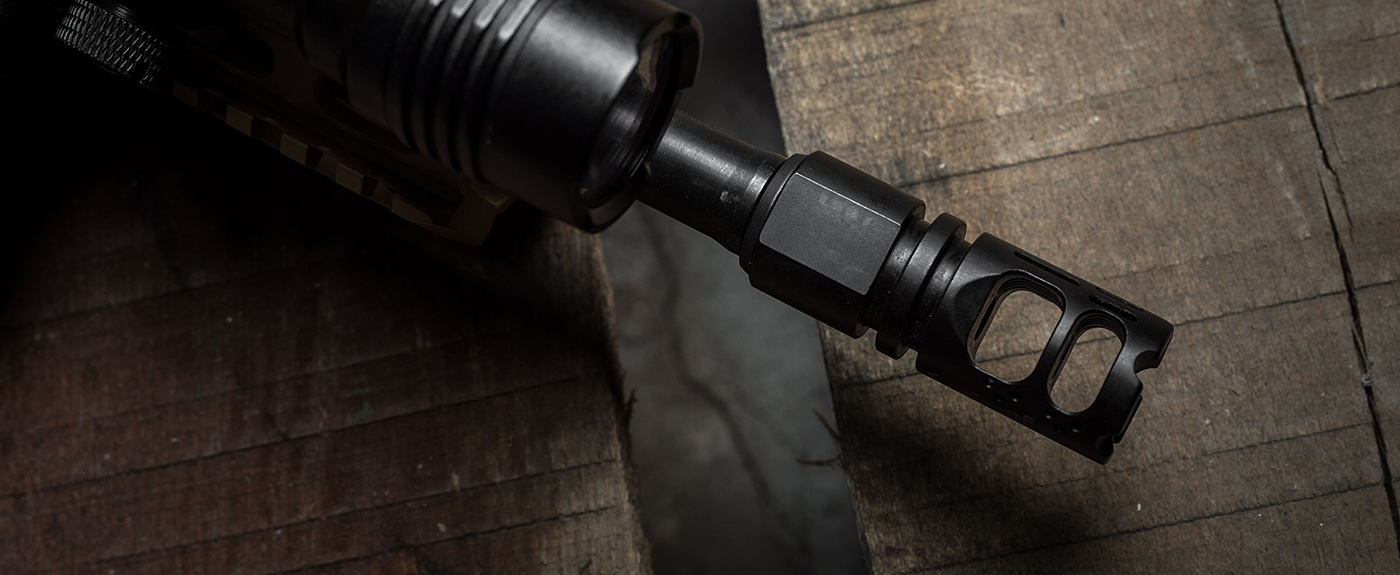
There are a whole lot of components that enhance your shooting experience that live on your rifle’s muzzle. There are there main categories of muzzle devices on the market: compensators, muzzle brakes, and flash hiders.
- Compensators - Compensators help prevent muzzle climb, ensuring the accuracy of your follow-up shots. AR-15 compensators vent gases from the barrel upward and out, keeping your rifle straight as it counters muzzle climb when firing rapidly.
- Muzzle Brakes - The AR-15 can send rounds downrange quickly, but firing rapidly can result in muzzle climb as the elevation of the barrel increases from your weapon’s recoil. Whether you’re hunting or shooting in competition, when you shoot your rifle, you need to be able to shoot it accurately. The recoil of the rifle can prevent you from taking your follow up shot accurately.
Muzzle brakes are proven to reduce felt recoil by as much as 50 percent. These components vent gases horizontally, giving you a clear line of vision while enhancing the shooting experience. Because the gases are vented horizontally, many shooters consider it courteous to avoid using muzzle brakes in a crowded range environment, as the gases can interfere with the experience of nearby shooters.
- Flash Hiders - Gunpowder combusts when you fire your AR-15, and there’s a flash of light that results as the bullet leaves the barrel. This occurrence, referred to as muzzle flash, can give away your position. It can also temporarily blind you in a low-light condition, causing you to lose focus while decreasing your accuracy.
Flash hiders, which come standard on most stock threaded-barreled tactical rifles, protect you from excess muzzle flash. This means you’ll be able to see more clearly and shoot more accurately. On top of that, it’ll be harder for someone else to know your location, so you’ll be safer in a tactical situation.
Lower Receiver Group Parts
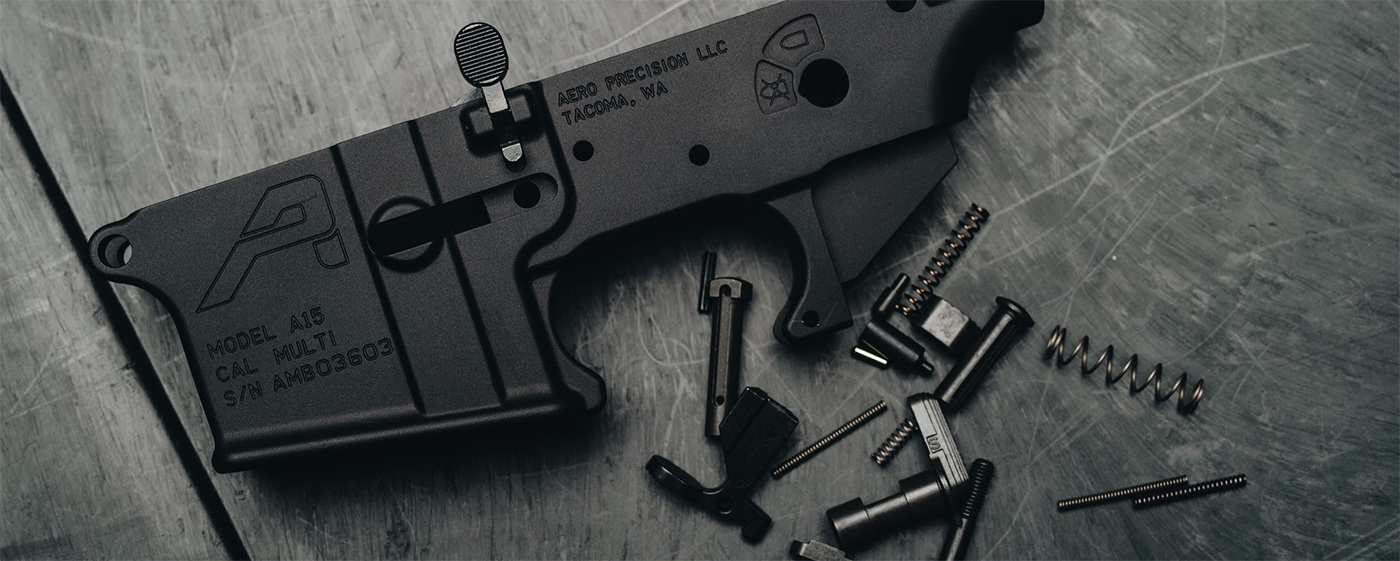
The lower receiver group connects to the upper receiver group, and together, the two parts complete your rifle. You’ll find the trigger group, buffer tube, magazine release, safety selector, bolt catch, and other necessary components. You can either buy completed lower receiver groups or buy them stripped, assembling them on your own.
There are many different individual components that make up your lower receiver, including:
- Lower Receiver - The lower receiver is the part of your rifle that is generally considered to be the firearm itself (rather than just a component). For this reason, it is one of the most legally regulated parts of an AR-15. On AR-15s, the lower receiver is where you’ll find your weapon’s serial number.
- Trigger Groups - You can’t fire your rifle at all without a trigger. And you can’t fire it accurately if you don’t have a trigger pull weight that feels comfortable to you. The trigger group consists of the trigger and the hammer of your AR-15, as well as other necessary housing components. Like any other piece of your weapon, you can customize the trigger of your rifle to your exact specifications. Triggers can also play a pivotal role in your shooting experience. You’ll enjoy more accuracy and faster a firing rate when you’re using a lighter trigger. But keep in mind that a light trigger might easily lead to negligent discharge (ND) due to the ease of firing. That is the reason why Military and Law Enforcement uses heavier triggers on their duty weapons for liability reasons. Everyone has their own opinion on what constitutes a ‘light’ trigger, and our rule of thumb is that any trigger lighter than 4.5 lb is considered light. The United State Military is using 5.5 to 8.5 lb triggers on their standard-issue M4s.
- Lower Parts Kit - Many gun enthusiasts enjoy putting their rifles together themselves. After all, the better you know the anatomy of your AR-15, the easier it will be for you to customize it to your exact specifications and to identify the cause of malfunctions. While you can certainly buy a completed lower receiver group, you can also buy a stripped one and put it together yourself with a lower parts kit. What’s better than shooting with precision than with a weapon you assembled yourself?
- Buffer Tube / Buffer - As part of your rifle’s recoil system, the buffer helps absorb a lot of that kick, making your shooting experience more seamless. The right buffer can give you an edge over your competitors, as you’ll be able to shoot accurately for a longer period of time. Buffer tubes house both the buffer and the buffer spring. Together, these components slow down the faster parts of your rifle’s action, protecting both themselves and the frame. This ensures that the integrity of your weapon remains intact. With a pistol buffer tube, you’re able to build a shorter barrel weapon without having to obtain the usual paperwork because the A.R. will classify as a pistol. This allows you to use any length of barrel on your weapon – even those that are shorter than 16 inches.
- Buttstock - How your rifle rests on your shoulder plays a major role in your overall gunning experience. It’s easy to be distracted if you’re uncomfortable while aiming at targets. In the simplest terms, the stock is the part of your AR-15 that connects to the rifle’s firing mechanisms. Like most other parts of your gun, you can choose among a wide array of stock options to build your rifle to your exact specifications. As you begin your search for the stock that’s right for you, the component will fall under two categories: fixed stock or collapsible stock. While collapsible stocks help you place the perfect amount of distance between your shoulder and your rifle, fixed stocks are more formidable and can help counter heavier front ends.
- Magazines - You need to hold your bullets somehow, right? That’s what magazines are for. You can get different sized magazines, but it’s important to keep in mind that laws for the size of magazines can vary from state to state. On top of that, because of the political climate, you never know when these kinds of laws might change. It’s important to stay in the loop about these rules, so you can make sure you’re within the confines of the law.
Grips

To ensure the best shooting experience, you have to have the firmest grip on your rifle. When it comes to getting the best hold on your rifle – and therefore the most accurate shots – you’ll have to consider both of the following:
- Pistol Grips - Your trigger hand has the final say as to when a bullet is fired. That’s why you need to make sure that your trigger hand has the best possible grip on your AR-15 as possible. The pistol grip attaches to the lower receiver, giving you a firm handle of your rifle. You can choose among a multitude of grips, finding the accessory that feels best in your hands. The better your grip, the bigger your advantage.
- Foregrips - Both of your hands play a crucial role in determining how accurately you fire your rifle. In addition to getting a good pistol grip with your trigger hand, you might also need a strong foregrip to ensure that you’re shooting a steady gun. Foregrips can be installed vertically or angled, depending on your preference. Choose whichever grip is most comfortable for your own shooting style to fire most accurately, and you’ll naturally give yourself an edge against your competitors.
At Wing Tactical, we offer a wide selection of AR-15 parts and accessories for gun enthusiasts everywhere. If you’re looking to build a new rifle or replace parts on your existing AR-15, you’ve come to the right place. Contact us to learn more about how to get the best, most reliable accessories for your rifle. Start browsing our selection of AR-15 parts today, and give yourself an edge!